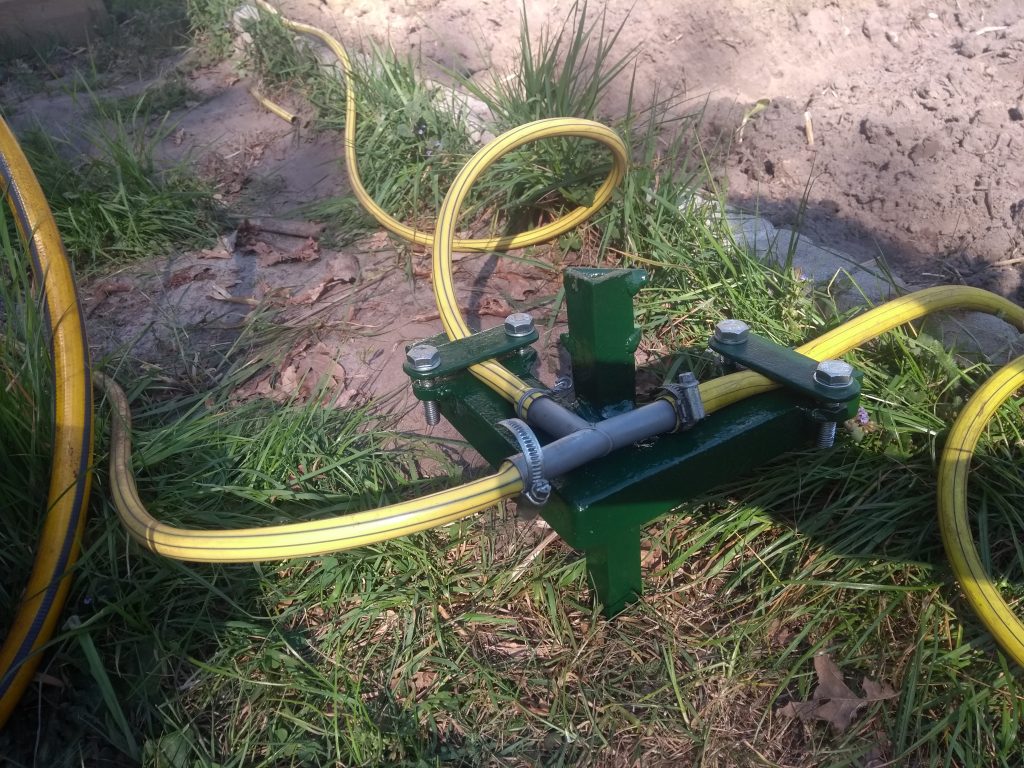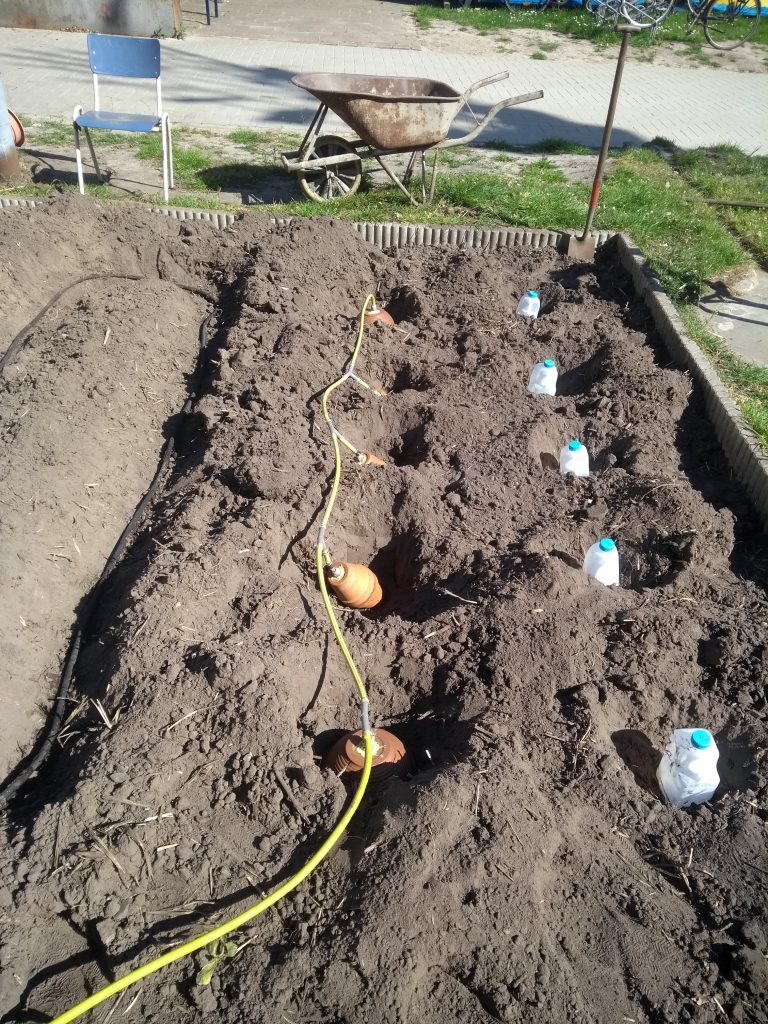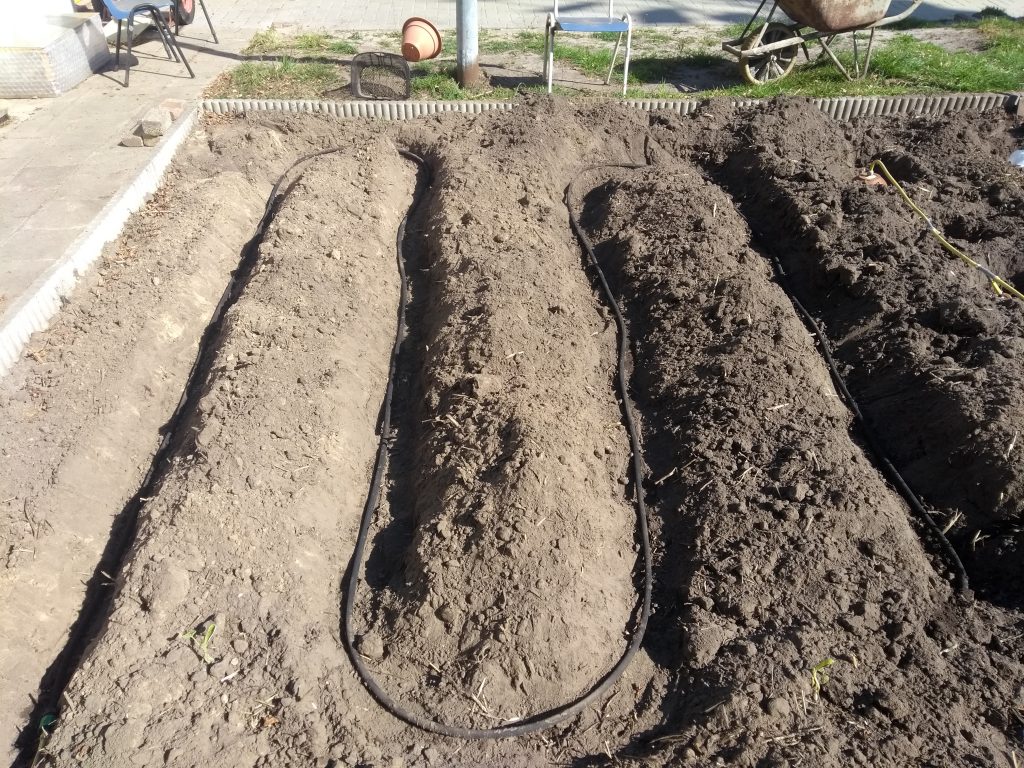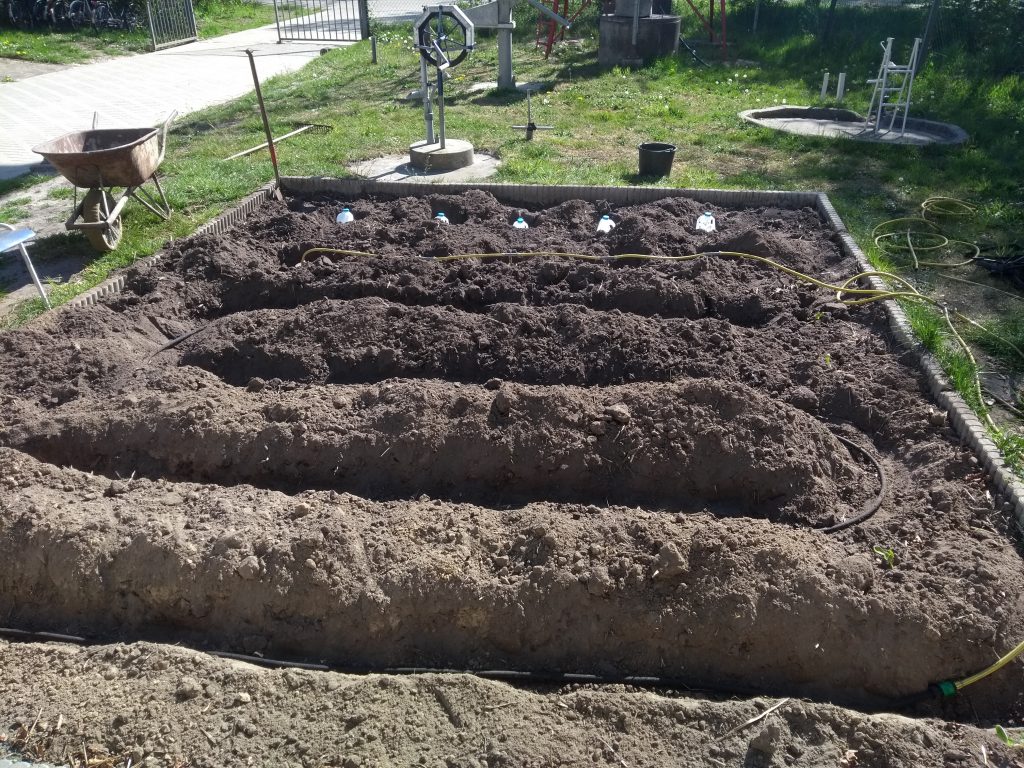Besides all the handpumps, windmills and solar collectors, the WOT-terrain also maintains a garden bed for growing vegetables.
For irrigation 3 different systems are tested in the garden. A bought irrigation hose, a flower pot based system and a system made from plastic milk bottles. The systems are applied in rows perpendicular to the rows of different vegetables. The conditions on the field are relatively constant but it is only a few square meters so drawing conclusions on the yield of the plants is not really justified. The main goal of the experiment is to discover advantages and disadvantages of the systems and not to perform a scientifically justified comparison. First all three systems will be described, later updates will be placed to comment on the systems.
Irrigation hose
First of all there is the irrigation hose. This is a readily bought polymer hose produced by REHAU. The material of the hose possesses the property to ‘sweat’ so that when water is inside this slowly enters the soil. To ensure a constant water supply, we’ve connected this pipe to our water tank. The pipe is buried at a depth of approximately 20 cm.
Because the water directly flows into the soil less water evaporates.The company claims that by using this system correctly, up to 70% of water can be saved compared to conventional watering. A 15 meter pipe was bought for approximately 20 euros.
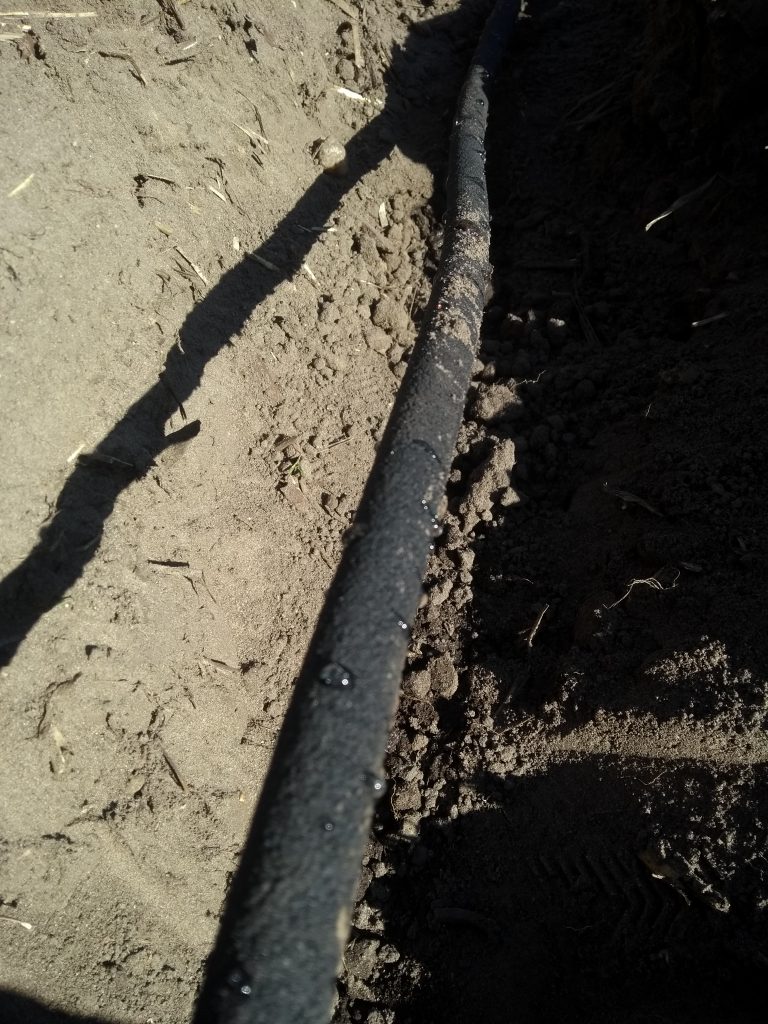
Ceramic Plant pots
The second system is based on flower pots. Unglazed ceramic pots possess a similar property to that of the irrigation hose. The material is porous and when there is dry soil around the pot water is ‘pulled’ through the material. When the ground is wet however, less water will flow through the ceramic material. This method is a proven system for irrigation and so called ‘ollas’, pots with a large body and a smaller neck, have been used for a long time. The pots are buried and plants are placed in the vicinity of the pot, the roots grow towards the olla and the plants always get the right amount of water.
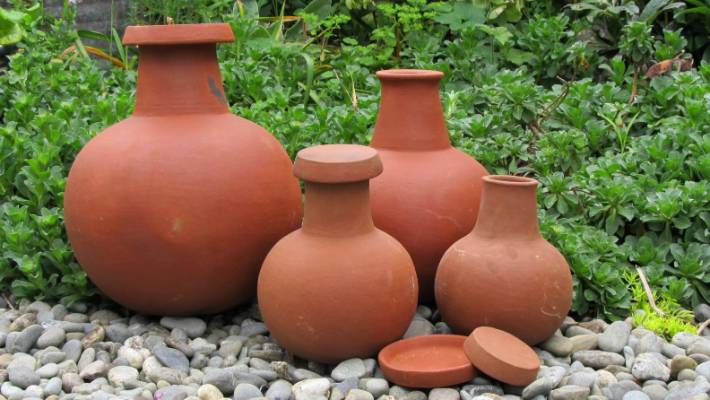
(source:https://www.vtcclaypotindia.com/clay-irrigation-pot/ )
Pottery with a shape similar to the ollas, relatively expensive in the Netherlands and the skills to make them ourselves we do not possess. Therefore we decided to make our system out of unglazed ceramic flower pots. These are both cheap and readily available. The large opening of the pots were closed off with other pots and sealed with sealant. The hole in the bottom of the pot was fitted with a cable gland so that a garden hose could be attached to it. Several of these pots were connected and attached to the water supply. Two different designs have been made.
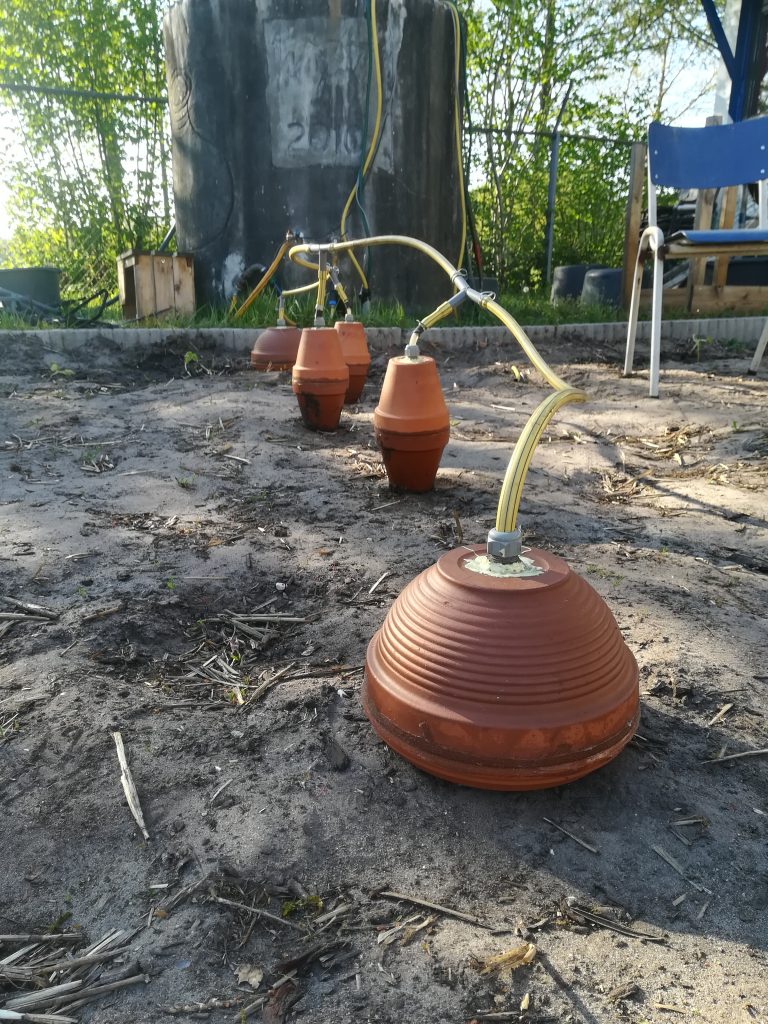
All pots connected 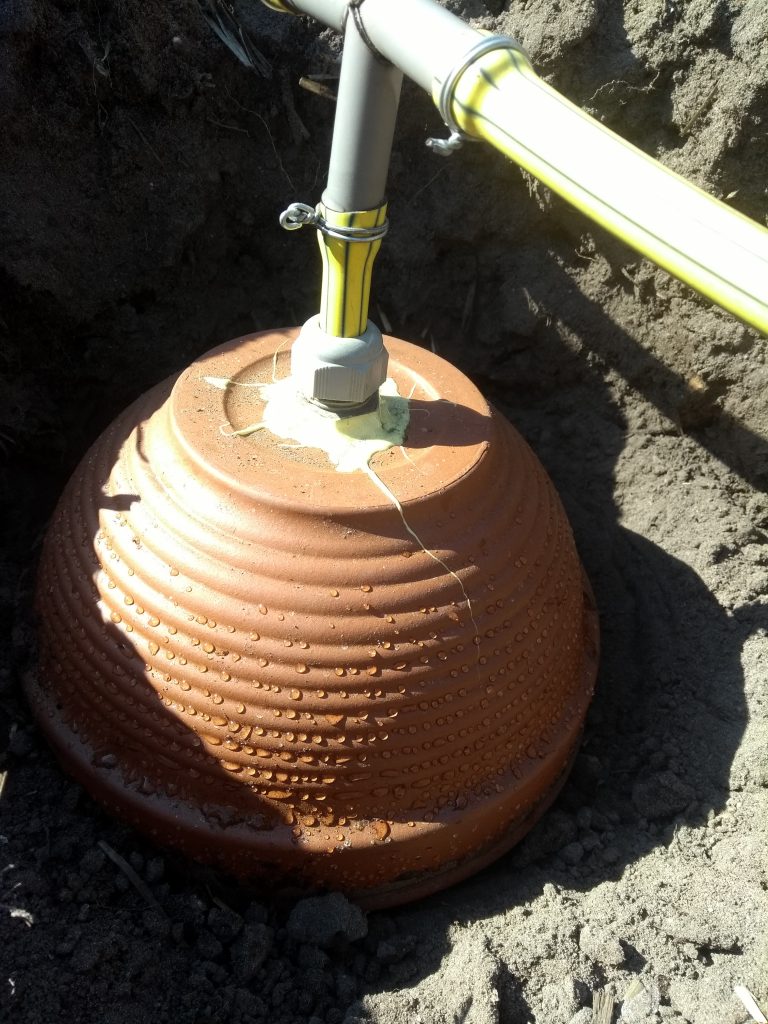
Water droplets forming on the pot. 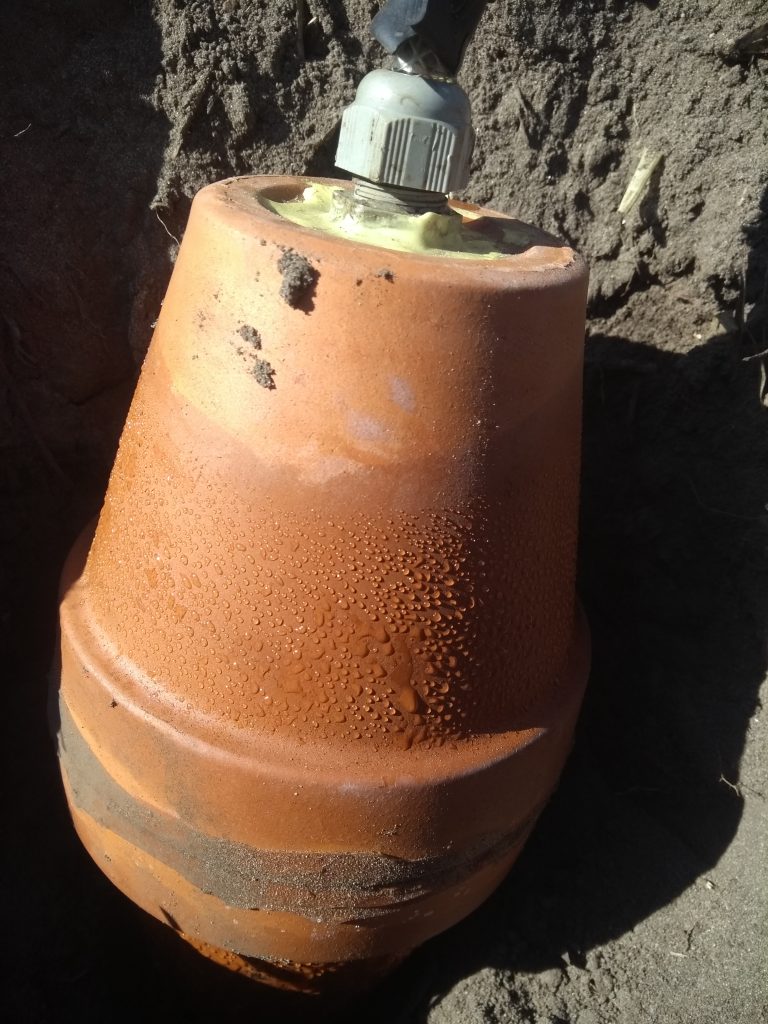
Water droplets forming on the pot.
Plastic jugs
Finally a system made of plastic jugs is tested. Small holes are poked in an empty plastic milk jug. These jugs are buried, filled and the cap is fermly put on. The principle behind this method is that because the cap is on and because there are such small holes, air can’t easily enter the jug and thus water doesn’t flow out easily. Because of this water is dispersed over a large amount of time. Also if the ground is wet, possibly, this causes the water flow to decrease even more since less air is present in the soil. Because we did not know the effectiveness of this method and we didn’t exclude the possibility that water would flow out at a to large rate, we didn’t connect this system to the water storage for a continious water supply. The jugs were to be filled manually.
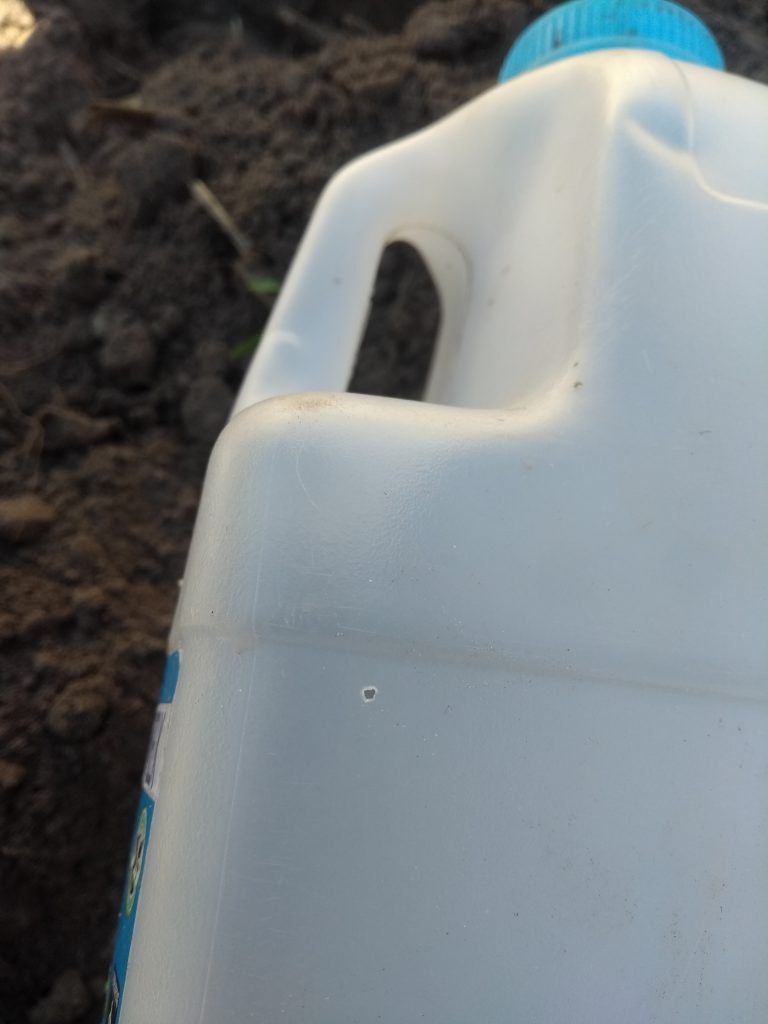
Below are some pictures of the setup of the complete system. Updates of the operation of the systems will be given in the future.
Flow controll
In order to be able to control the flow going to each system, a clamping system was made. It is shown below. One tube goes to the irrigation hose while the other goes to ceramic pots.
